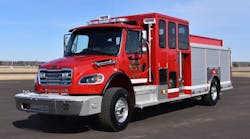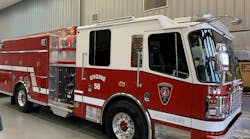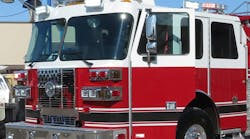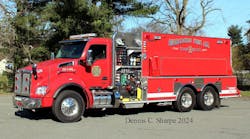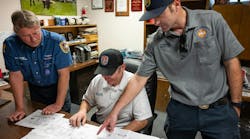Many fire departments, not only nationally but even internationally, have changed their response policies to reflect a safe response based on modern-day traffic with the modern-day fire problem – and that is good. However, many more departments would like to change response policies, but face stiff opposition from within, whether from fire unions or from firefighters and fire officers, which is justified.
Why does this exist? Because there is a myth, spouted by politicians, that each piece of fire apparatus must make X amount of runs or we will close your firehouse. But fire protection should not be, is not, based on the number of calls a given fire department or fire company runs. Fire protection should be, is, based on population density, building construction, sufficient manning, water supply and alarm dispatching. Gosh, that sure sounds a lot like an ISO (Insurance Services Organization) fire protection rating schedule.
If you are in a career fire department, your municipality pays you for what you might have to do, not what you do. Some public officials view us as an expensive insurance policy; others view the fire service as a necessary evil that drains resources away from social programs that would all but assure re-election, yet others view us as civil service leeches who, unlike other civil servants (take for instance the police department, which creates revenue), are revenue drainers and nothing more than a money pit. I have never heard of a police station being closed due to a lack of calls. Have you? Yet this seems to be the unfair benchmark to which we are held.
Much of what we do – the hours of training, maintenance of facilities and equipment, fire prevention, fire inspectional activities and fire educational programs – seems to go completely unnoticed. I remember years ago, on a local TV newscast the news anchor bemoaned the fact that the FDNY was too large and that substantial cuts of manpower and apparatus should be made. Just a few years later the World Trade Center disaster occurred, where we used every firefighter and every piece of equipment. Unfortunately, up-to-date apparatus, equipment and proper manning are the exception, not the rule in the U.S. fire service.
With all the bad news and problems surrounding proper, safe response procedures, there are some good news stories. A string of accidents involving motorists who failed to yield to fire apparatus has prompted the Los Angeles Fire Department to issue new guidelines for fire apparatus operators. For example, the operator of a fire truck stuck in traffic must turn off warning devices and wait until the gridlock clears rather than trying to maneuver around vehicles. Fire officials drafted the rules after an internal review showed that fire vehicles were involved in 824 accidents from 1999 through 2001. Another change, expected to be implemented this year, would impose speed limits on fire apparatus operators. Fire apparatus would be prohibited from going more than 10 mph above the posted speed limit. Fire trucks driving into opposing traffic lanes and through intersections would not be allowed to travel faster than 20 mph. Better soundproofing and stereo systems in cars, along with cell phones and other distractions, contribute to emergency vehicle response problems. Los Angeles police and fire officials plan to team up to crack down on motorists who fail to yield the right of way to fire apparatus. Beginning this fall, police officers on motorcycles will drive next to fire trucks on the way to emergency calls, pulling over drivers who fail to yield.
Martin County, FL, Fire-Rescue represents another success story. Under a program that took effect Jan. 1, 2004, Martin County Fire-Rescue has turned off the lights and sirens and slowed support vehicles responding to some calls, in a new effort to prevent crashes involving emergency vehicles. First responders still go “lights and sirens,” arriving in the same amount of time to fires, motor vehicle accidents crashes and other emergencies, but vehicles going to assist them obey all traffic laws, even waiting for signals to turn green. Although there have not been any major crashes involving county ambulances or fire trucks in recent memory, fire officials in Martin County wanted to follow a safety policy (“responding on the quiet”) popular across the country.
While it would be nice to be able to lessen the number of fire apparatus exposed to accidents on the road and reduce fire service and civilian risks, political considerations may prevent that with the threat of closing fire stations or laying off much-needed manpower. Perhaps a good first step, a compromise, if you will, would be to limit the use of lights and sirens on some, if not all, responding vehicles rather than limiting the number of responding vehicles. Statistics tell us that an emergency vehicle is four times more likely to be involved in an accident with lights and sirens activated and 10 times more likely to hurt or kill someone, perhaps even yourself, than when responding “on the quiet.” Although responding with fewer vehicles is preferable with the current political climate, it may not be attainable. Until public officials understand that they are paying us for what we may have to do and not what we do, this may be the best short-term solution.
Michael Wilbur, a Firehouse® contributing editor, is a lieutenant in the New York City Fire Department, assigned to Ladder Company 27 in the Bronx, and has served for the past five years on the FDNY Apparatus Purchasing Committee. He has consulted on a variety of apparatus related issues throughout the country. For further information access his website at www.emergencyvehicleresponse.com.
